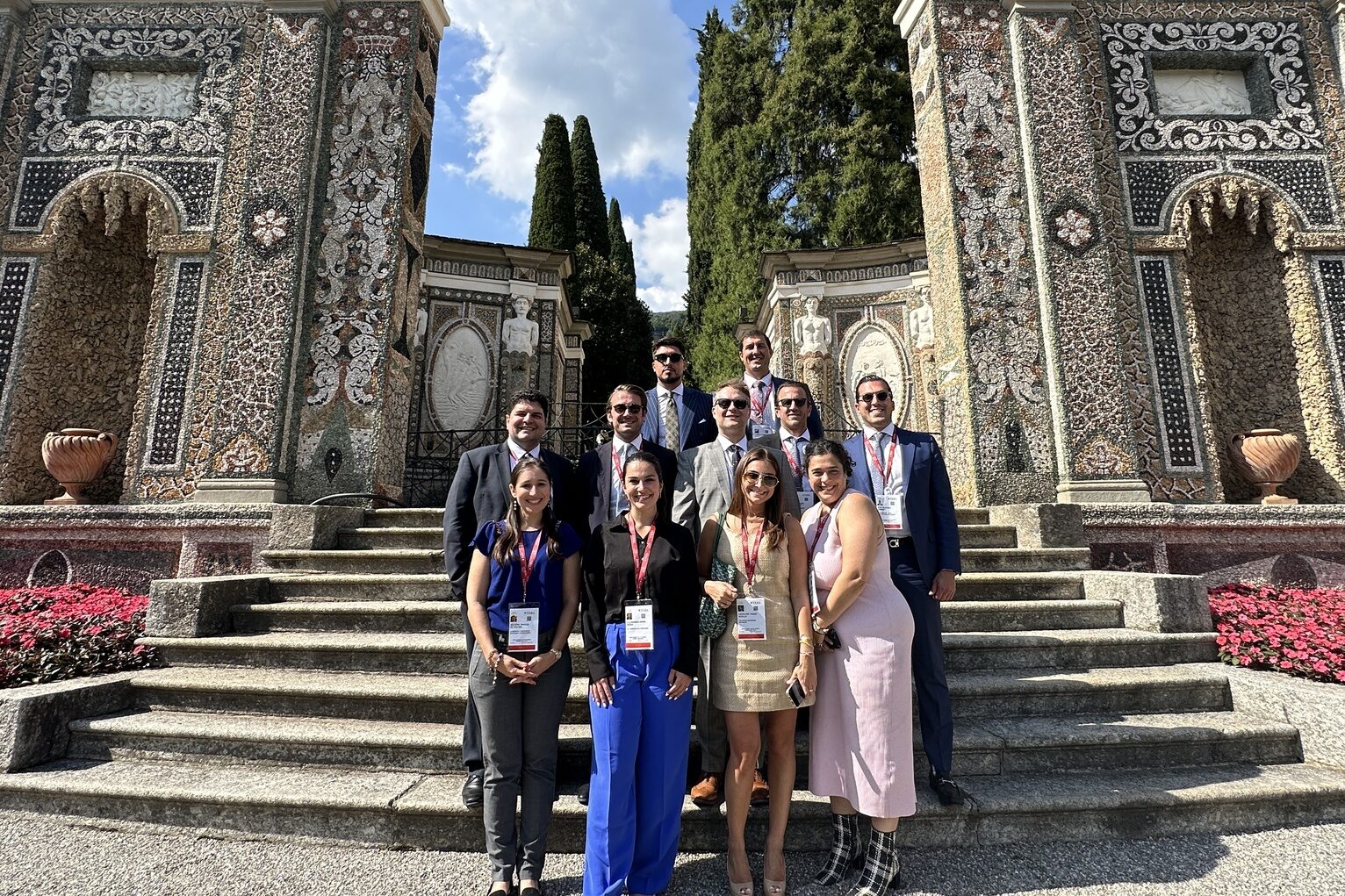Growing up in the suburbs of New York City among a big Italian-American community, Professor Vincent J. Cannato has respect for his Italian origins. “My grandfather was born in Sicily and grew up in Calabria and came to America when he was 17. My grandmother was born on Elizabeth Street in New York City’s Little Italy,” Cannato writes during our email interview. Cannato is half-Italian, as well as his wife and children. “Italian-American culture– the food, the music, the general attitude toward life– is something that is an important part of who I am,” Cannato writes.
With a PhD in History from Columbia University, Cannato is Associate Professor of History at the University of Massachusetts, Boston. Beside teaching, he writes. Author of “American Passage: The History of Ellis Island,” “The Ungovernable City: John Lindsay and his Struggle to Save New York,” Cannato is also co-editor of “Living in the Eighties.”
Referring to his latest book, “American Passage: The History of Ellis Island,” Cannato writes it was nice for him getting in touch, during his researches, with people who had connections with the immigration experience of that time. “The stories that I told were just a small sampling of the many stories of immigrant experiences there,” Cannato writes. “My book was an attempt to draw a larger picture about why Ellis Island was created and what happened on the island.”
Not to forget is his contribution to newspapers, such as The New York Times, The Wall Street Journal, The Washington Post and more.
It was a recent article “How America became Italian” published in The Washington Post that caught our attention and curiosity in interviewing him.
Q: L’Italo-Americano is the oldest ethnic newspaper in the U.S that focuses on telling Italian-American stories since 1908. How much do you think is this contribution important to the American society?
A: Newspapers like L’Italo-Americano do a great service by celebrating the contributions of Italian Americans to American culture. It is a constant reminder today that America has been built by people of all different backgrounds. I am glad to see that L’Italo-Americano has been doing this work for over 100 years and hope that it continues its mission for many years to come.
During your interview you say “Americans are once again concerned about the number of new immigrants and their ability to assimilate.” For more than 25 years Italy and now Europe are living a difficult situation that is referred by some as a humanitarian emergency and from others as a problem that needs to be turned down with walls and barbed wires. Do you think that Italy and Europe are ready to have the “transformation” that characterizes the American society?
Europe has had a much more difficult time assimilating newcomers into their culture. I don’t think they can have the transformation such as in American society because they are not American society. They are not built on the same model and history as the U.S, which has helped it absorb generations of immigrants. Economically, Europe is having problems and probably can’t sustain large numbers of refugees. Between the migration crisis and the economic crisis, the whole experiment with the EU is probably on shaky ground. America certainly has issues relating to immigration, but I don’t envy the situation of European, and I don’t think it is a problem that is going away any time soon.
What improvements do you wish to see in regard to the present American Immigration policy?
No matter what Americans think about immigration, nearly everyone believes that the current system needs to be fixed. I would like to see a number of things: increased border security that would limit the number of illegal immigrants; a path to legalization for those who are already here illegally; a better system of keeping track of those with temporary visas; and probably a slight shift away from family reunification in favor of more visas for skilled immigrants.
Referring to what you wrote about Italian-Americans “lively ethnic community that helped shape mainstream culture.“ What do you believe is the contribution of the Italian-American community to the American society?
As with other groups, Italian Americans are very diverse in their contributions to many facets of American lif. Supreme court Justices, doctors, professors, businessmen, but there are some things that are unique to Italian Americans. Food, of course, is the most obvious. Classic “red-sauce” Italian food is really an Italian American invention. Pizza is another Italian food item that has come to be identified as uniquely American, as American put their own twist on pizza that would shock your average Neapolitan pizza maker.
The Little Italys around the nation are practically gone. Today, they mainly stand as touristy places. At the end, we live in a fluid, global, multiracial society. Still, they played an important role in the history of Italian assimilation, also carrying stereotypes that were often associated with Italians and sometimes used unfairly. How do you feel about the role they played compared to the one they have now?
Little Italys were a victim of success. As Italians-Americans prospered, they moved out of the old ethnic ghettos and into nicer neighborhoods, many eventually landing in the American suburbs. That was a positive sign of Italian success. But as they moved out of the old neighborhoods, there were not new immigrants to take over the old neighborhoods. However, there are still “Little Italys” that have retained some Italian presence, like Boston’s north end or Arthur Avenue in the Bronx. In moving out of the old urban ghettos, however, Italian Americans were able to move to the suburbs and mix with other groups and in doing so helped to break down many of the stereotypes that had plagued them. They became “Americans” but they also influenced what people thought was American.
Italian Heritage month is almost over and this is Italian Language Week around the world. Italian is the sixth/seventh most spoken language in the U.S. Do you think it is more important for Italian-Americans, that had Italian grandparents, great-grandparents, to discover their origins again, or for an American to know and respect the Italian contribution?
I think they are both important. It is important for everyone to know their heritage and understand where they come from and it is important for Americans to understand the contributions of Italian-Americans – and all other groups. Of course, as generations continue and intermarriage happens, the idea of being “Italian-American” changes.
Do you believe the American Dream still exists? If so, are there any differences from what it used to be?
We live in an era where there is growing pessimism and a sense that America is in a state of decline. I think there are some serious issues facing this country, but I still believe that the American dream exists. It’s a big part of what still drives immigrants to this country: the idea that life will be better for your children than it is for you. I hope that this country continues to provide economic opportunities for all of its citizens and continues to grow and prosper. There are challenges to be sure, but I think the opportunities are still there.




























